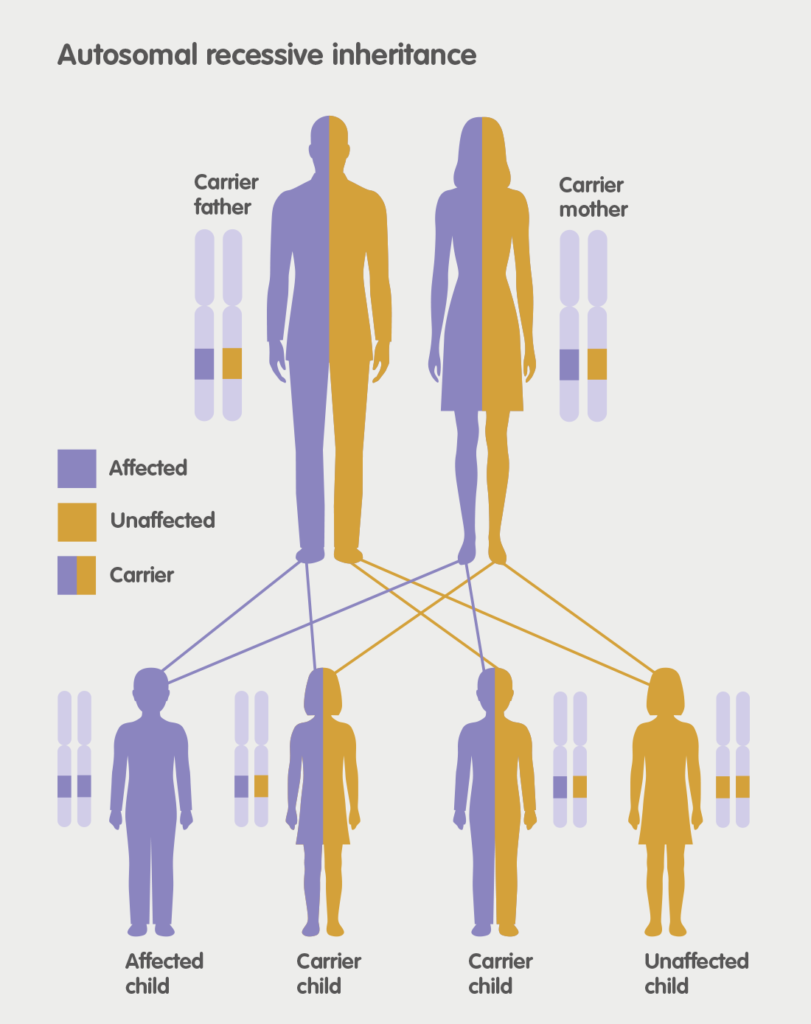Metachromatic Leukodystrophy (MLD): What It Is & Treatment Breakthroughs
Introduction:
Metachromatic Leukodystrophy is a rare and devastating genetic disorder that affects the central nervous system. In this article, we will delve into the details of MLD, its causes, symptoms, and explore the latest breakthroughs in treatment options. Let’s unravel the complexities of MLD and discover the hope that new advancements bring to patients and their families.
Understanding Metachromatic Leukodystrophy :
Metachromatic Leukodystrophy is an inherited metabolic disorder characterized by the deficiency of an enzyme called arylsulfatase A (ARSA).
This enzyme is responsible for breaking down a fatty substance called sulfatide. In MLD, the accumulation of sulfatide in the nervous system leads to the destruction of the protective covering of nerve cells, known as myelin. This results in impaired nerve signal transmission and progressive deterioration of motor and cognitive functions.

Types of MLD:
MLD can be classified into three main types based on the age of onset: late-infantile, juvenile, and adult-onset. Late-infantile MLD typically manifests between the ages of 1 and 2, while juvenile-onset MLD presents in childhood or adolescence.
Adult-onset MLD is the rarest form and usually appears in early adulthood. The severity and progression of symptoms vary among individuals and are influenced by the specific type of MLD.
Symptoms and Diagnostic Process:
MLD symptoms depend on the type and progression of the disease. Common manifestations include motor difficulties, loss of muscle tone, cognitive decline, behavioral changes, seizures, and vision and hearing impairments. Diagnosis involves a combination of clinical evaluation, neuroimaging, genetic testing, and assessment of ARSA enzyme activity levels.
Traditional Treatment Approaches:
Currently, there is no cure for MLD. Traditional treatment methods have focused on symptom management and supportive care. Physical therapy, occupational therapy, and speech therapy can help maintain mobility, function, and communication abilities. Medications may be prescribed to manage symptoms such as seizures, muscle spasms, and pain. Palliative care aims to improve quality of life and provide comfort.
Promising Breakthroughs in Treatment:
Exciting advancements have been made in the treatment of MLD, offering hope for affected individuals and their families. One notable breakthrough is the development of hematopoietic stem cell transplantation (HSCT) as a potential therapeutic option for early-stage patients. HSCT involves replacing the patient’s faulty bone marrow with healthy donor cells, which can provide the missing ARSA enzyme and halt disease progression in some cases.
Gene Therapy: A Beacon of Hope:
Another groundbreaking approach is gene therapy, which aims to address the underlying genetic cause of MLD. Gene therapy involves introducing a functional copy of the ARSA gene into affected cells, restoring the production of the missing enzyme. Early clinical trials have shown promising results, with some patients experiencing stabilization or improvement in their condition.

Hematopoietic Stem Cell Transplantation (HSCT) in MLD:
Hematopoietic stem cell transplantation (HSCT) has shown promise as a treatment option for early-stage MLD patients. The procedure involves replacing the patient’s faulty bone marrow with healthy donor cells that contain the functional ARSA enzyme. These transplanted cells can then produce the missing enzyme, which helps to break down sulfatide and prevent further damage to the myelin. HSCT has shown varying degrees of success, with some patients experiencing stabilization or even improvement in their symptoms. However, the success of HSCT depends on various factors, including the age of the patient and the stage of the disease at the time of transplantation.
Gene Therapy for MLD:
Gene therapy holds significant potential for the treatment of MLD. This innovative approach aims to correct the underlying genetic defect responsible for the enzyme deficiency. In gene therapy, a functional copy of the ARSA gene is introduced into the patient’s cells, typically using a viral vector.
Once inside the cells, the new gene instructs the cells to produce the ARSA enzyme, which can then break down sulfatide and prevent the progression of the disease.
Early clinical trials for gene therapy in MLD have shown encouraging results, with some patients experiencing stabilization or improvement in motor and cognitive functions. Ongoing research and advancements in gene therapy techniques offer hope for more effective and targeted treatments in the future.
Supportive Care and Symptom Management:
While there is currently no cure for MLD, supportive care plays a crucial role in managing the symptoms and improving the quality of life for affected individuals. Physical therapy helps maintain muscle strength and mobility, while occupational therapy focuses on preserving daily living skills and independence.
Speech therapy can assist with communication difficulties, and educational support is essential for individuals with cognitive impairments. Medications may be prescribed to manage symptoms such as seizures, muscle spasticity, and pain.
Palliative care provides comfort and support to patients and their families, addressing their emotional, social, and psychological needs.
Research and Future Perspectives:
The field of MLD research continues to advance, with ongoing studies exploring new treatment approaches and improving our understanding of the disease.
Researchers are investigating novel gene therapy techniques, optimizing HSCT protocols, and exploring potential combination therapies.
Additionally, efforts are being made to develop more accurate diagnostic methods and expand newborn screening programs to enable earlier detection and intervention. Collaboration between scientists, clinicians, and patient advocacy groups is crucial in driving research efforts and raising awareness about MLD.
Conclusion:
Metachromatic Leukodystrophy is a complex and devastating genetic disorder. While there is currently no cure, recent advancements in treatments such as hematopoietic stem cell transplantation and gene therapy offer hope for affected individuals and their families.
These innovative approaches aim to slow down or halt the progression of the disease, improve symptoms, and enhance the quality of life for those living with MLD.
Continued research, advancements in technology, and collaborative efforts hold the promise of further breakthroughs in the understanding and treatment of this challenging condition.





